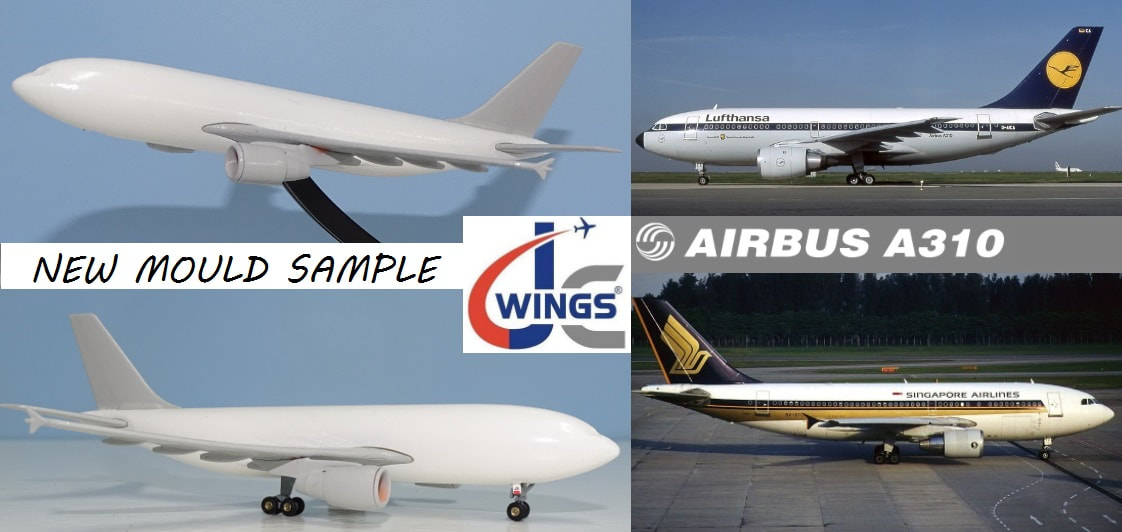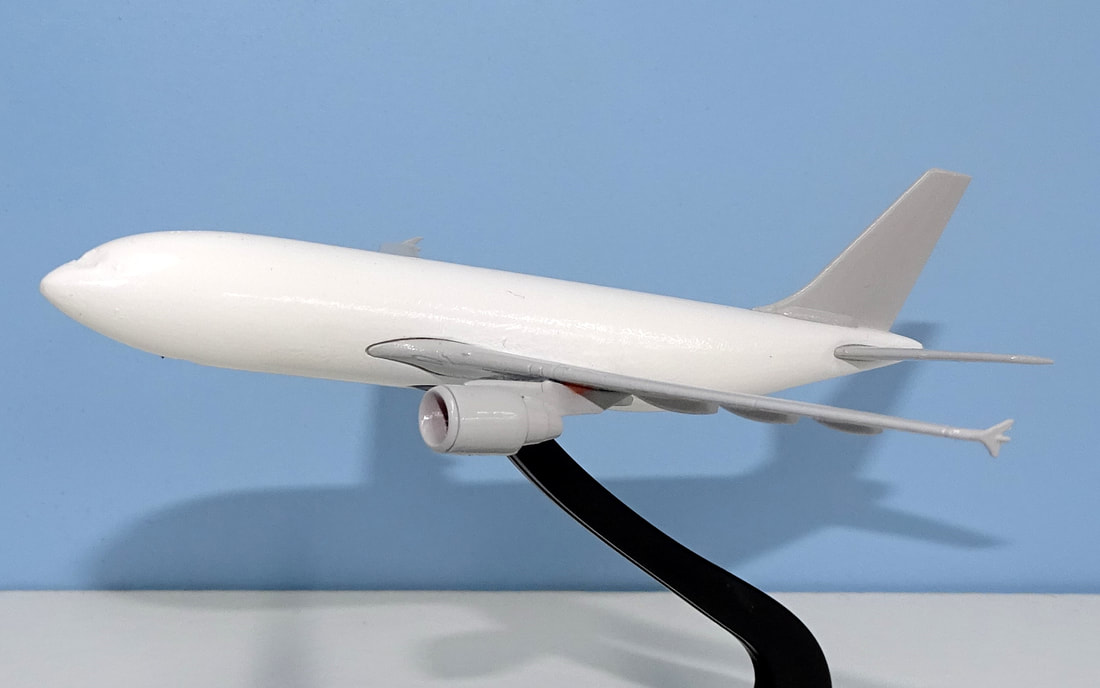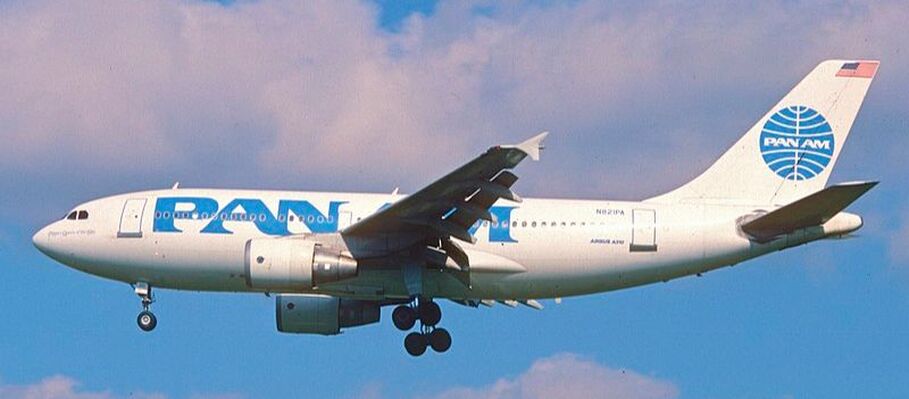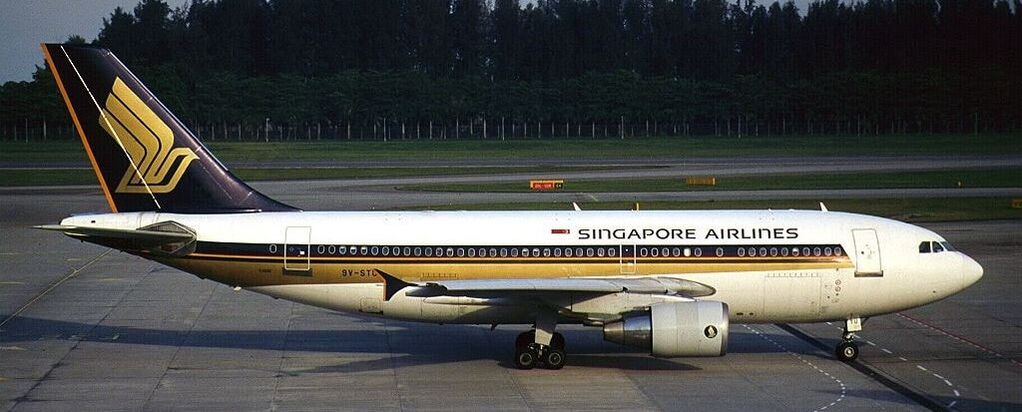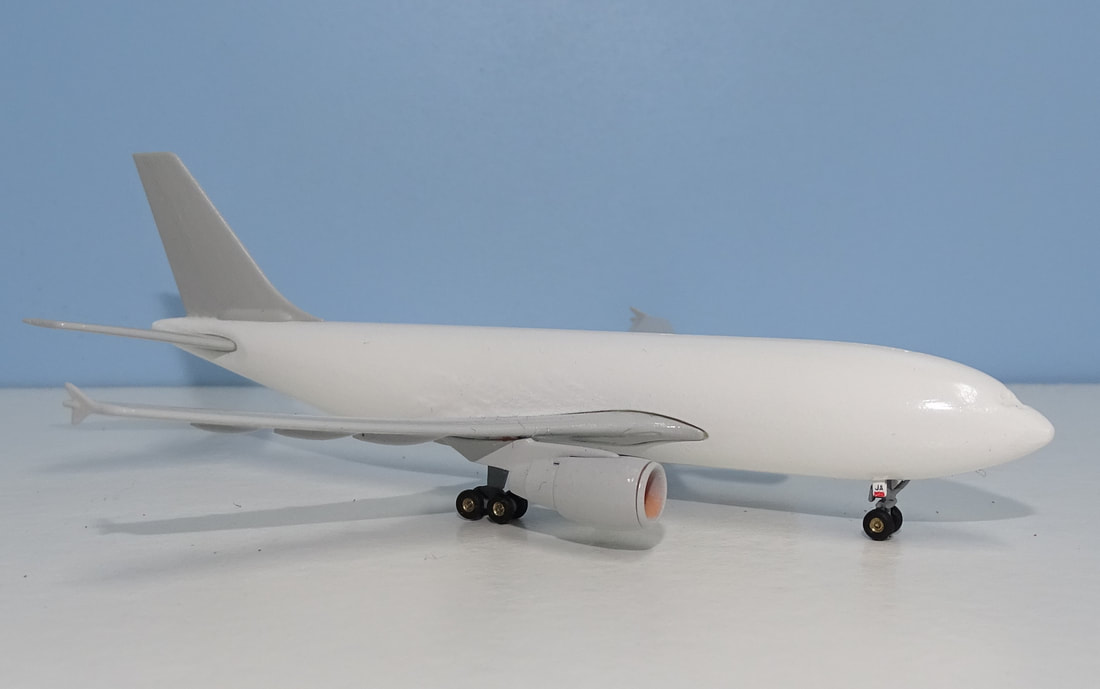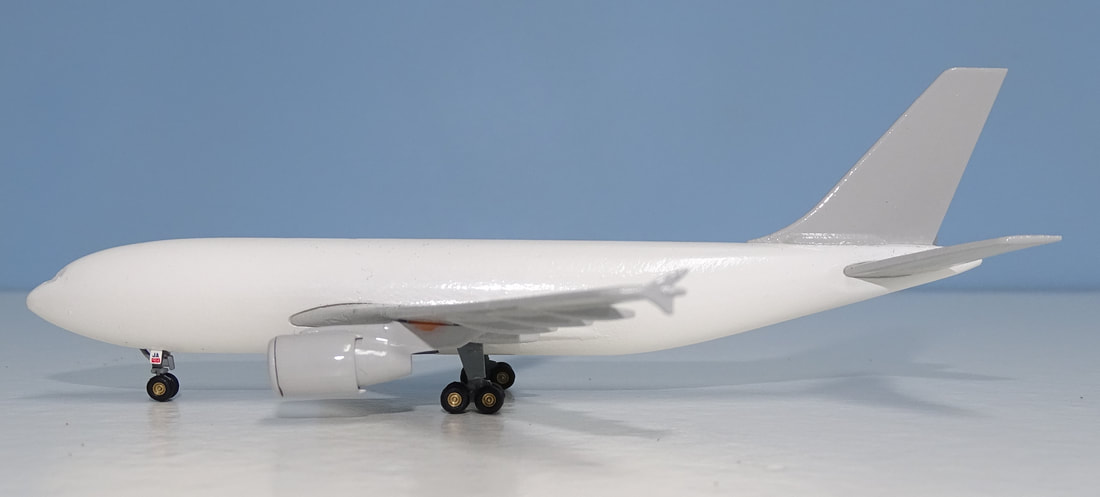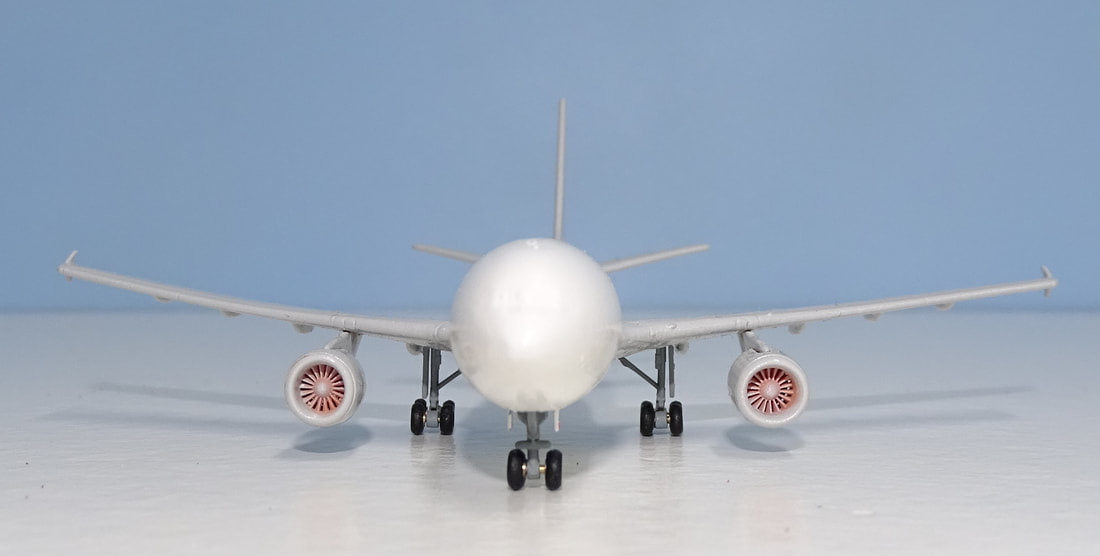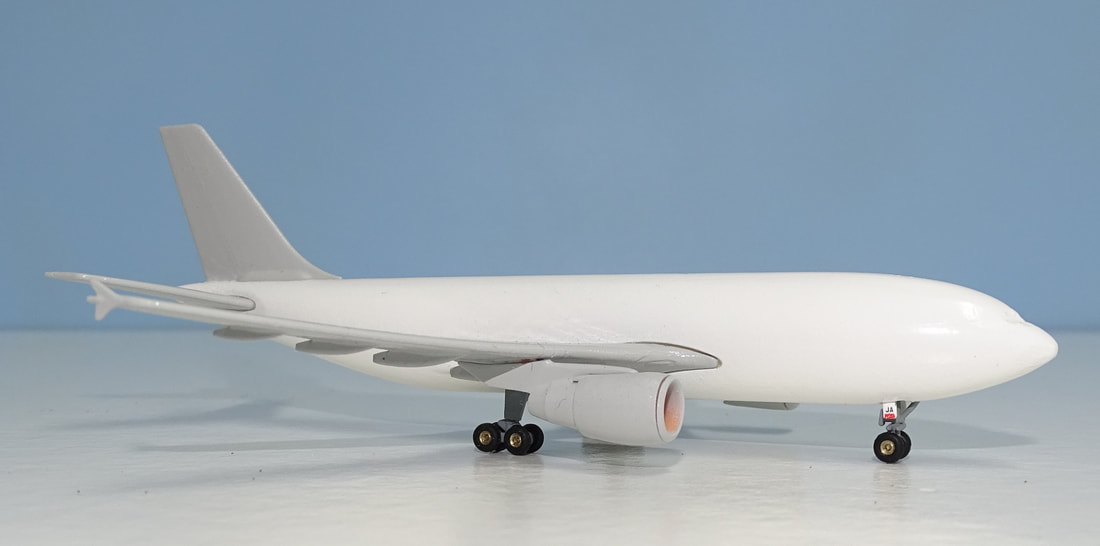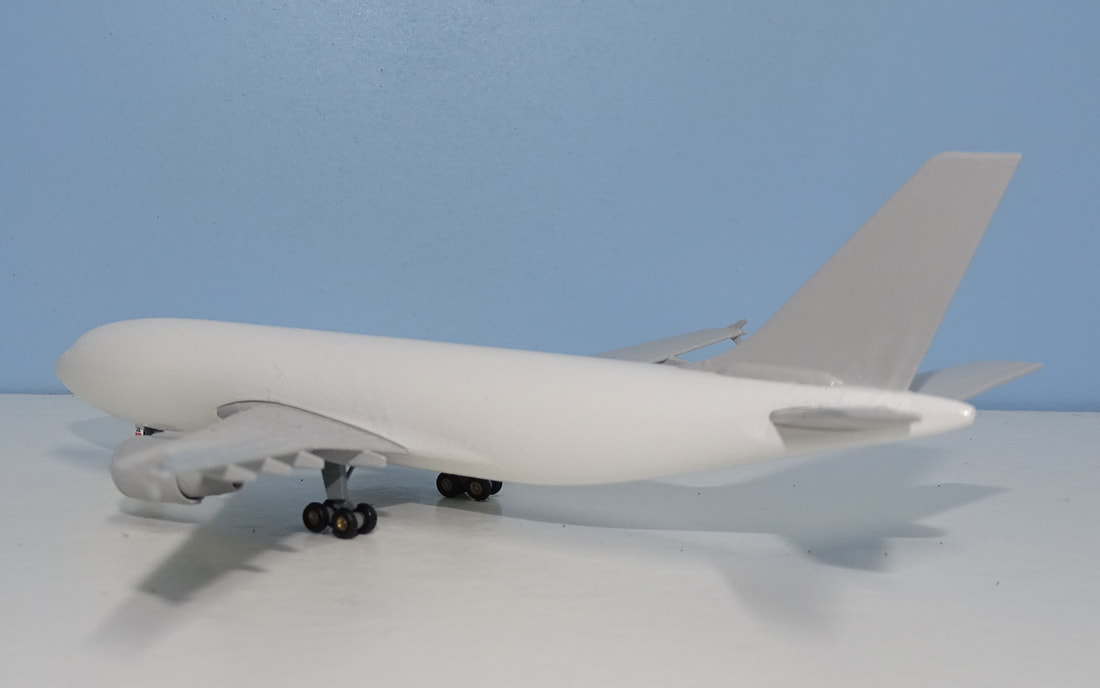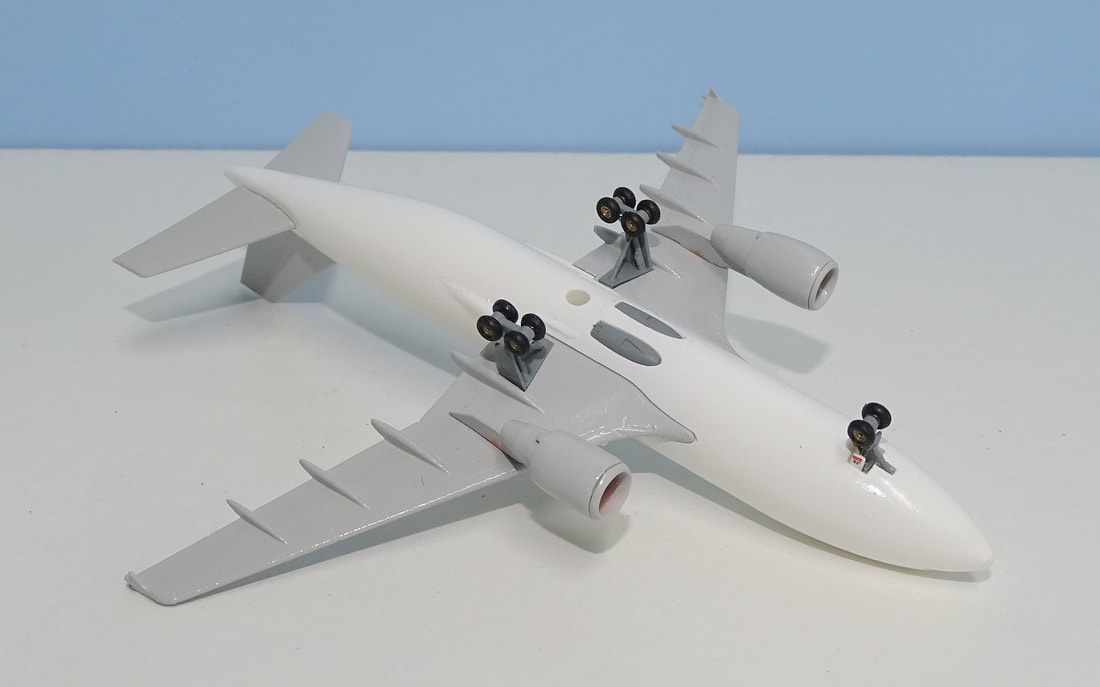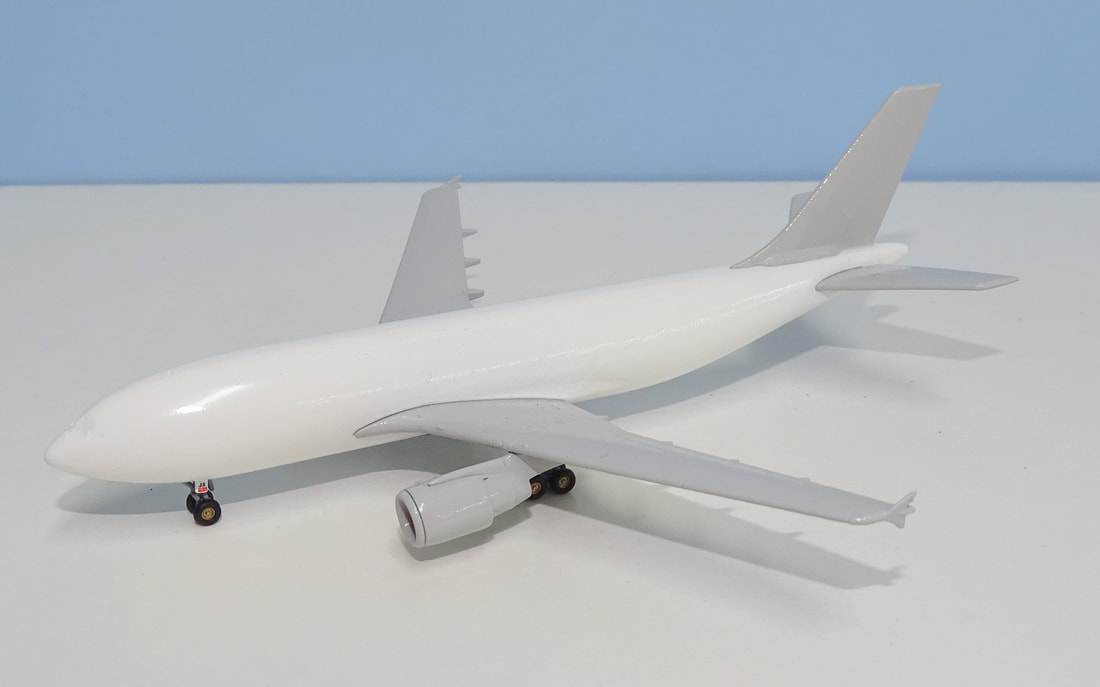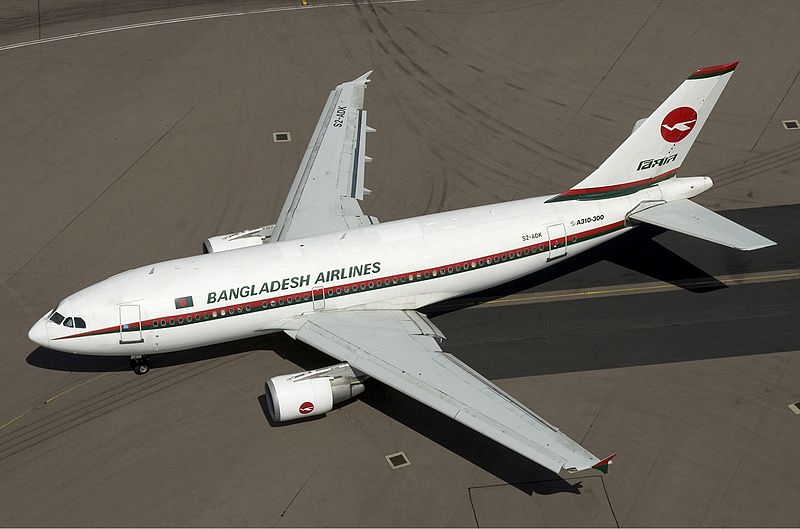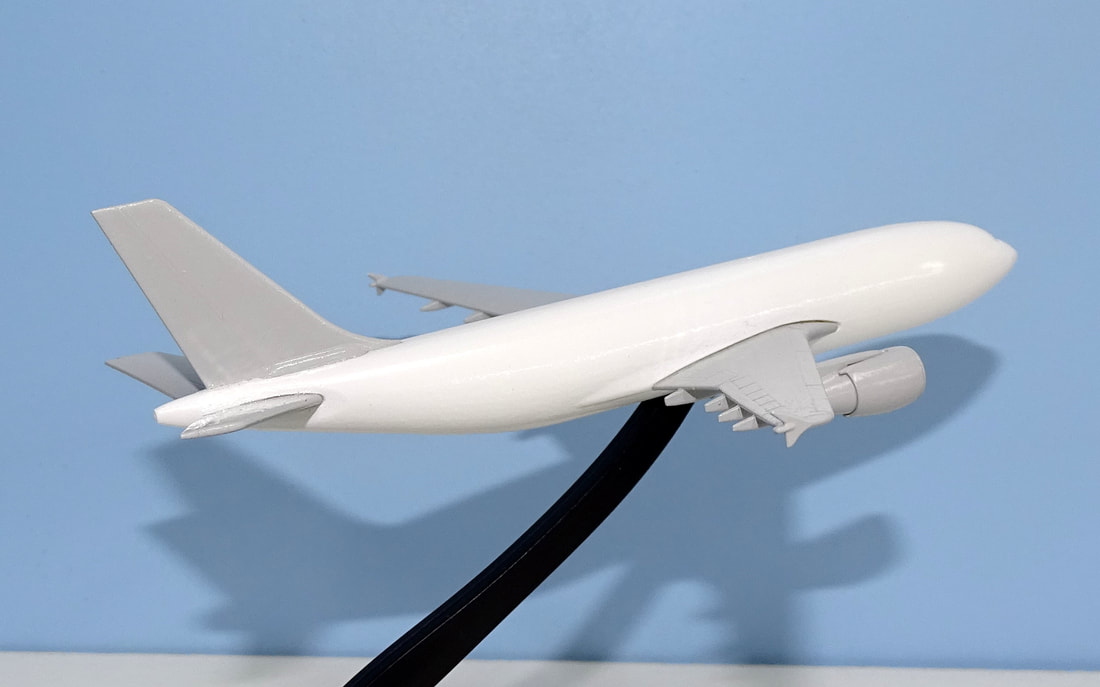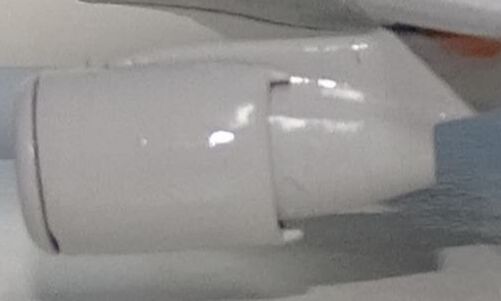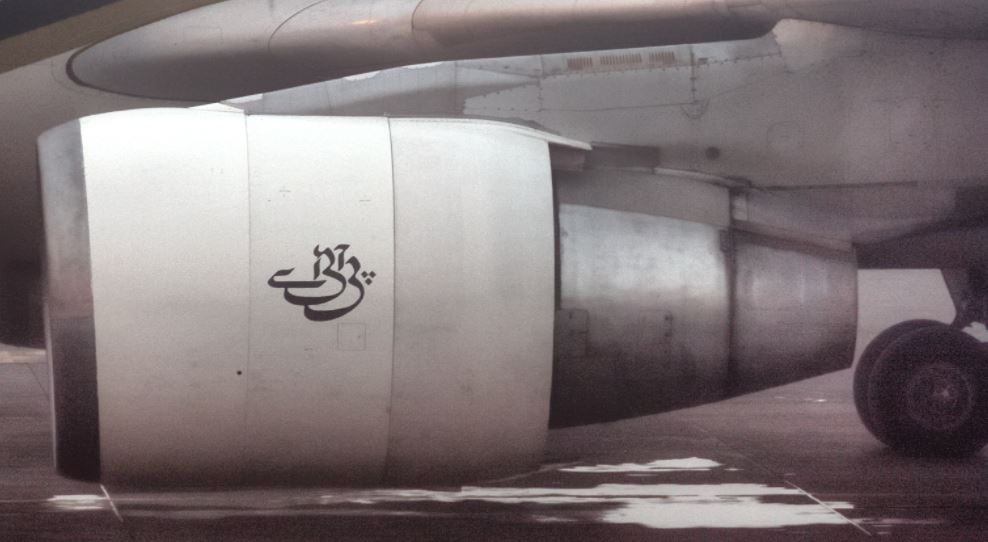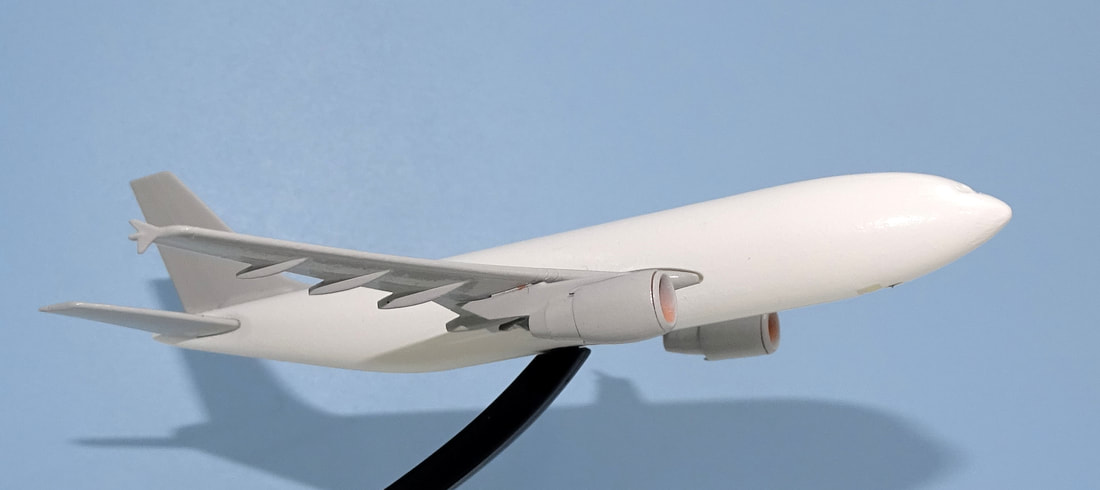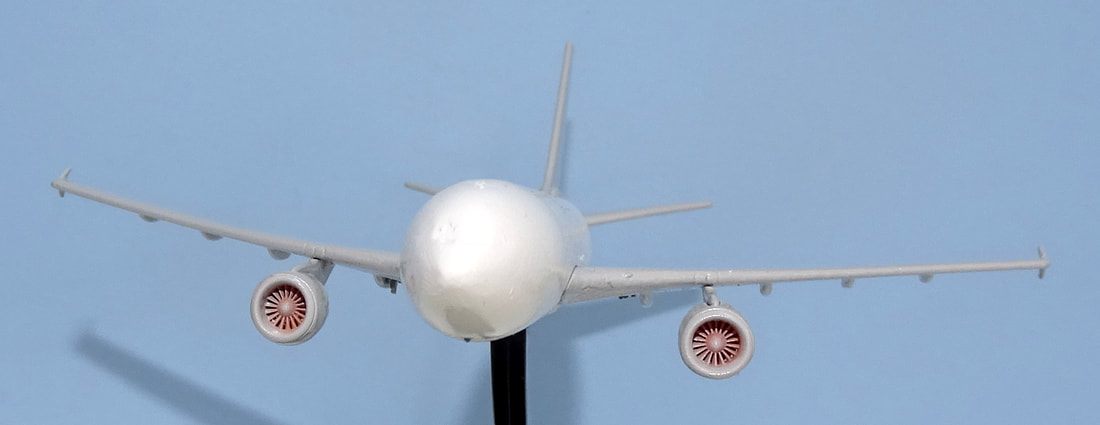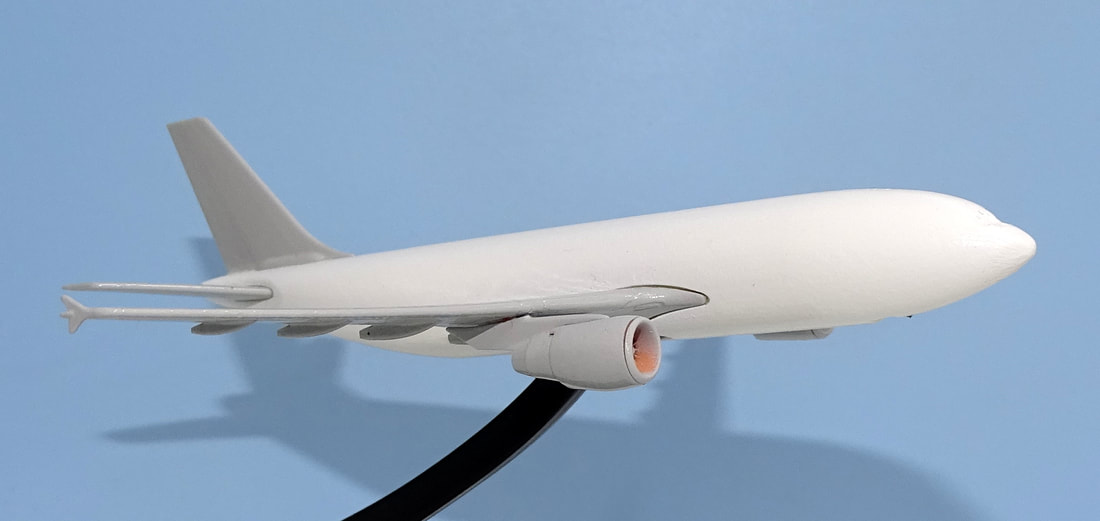JC Wings Airbus A310 New Mould Sample in 1:400 Scale
Modified: November 2021
At the end of September I reported on a pair of new 400 scale moulds being developed by JC Wings. For the original post see here:
The information I had at the time was very limited, and subsequently JC sent me some photos of the A310 mould. They have now followed up with the actual mould sample itself so I am able to provide a closer comparison of how it looks. One thing to bear in mind is this is not a diecast sample but appears to be made of quite soft plastic, which means the wings are easily bent. Nonetheless it gives a good idea of what to expect when the diecast version appears.
The sample mould is of an A310-300 (with wingtip fences) and is powered by the smaller Pratt & Whitney PW4152 engines rather than the larger General Electric CF6s. The PW4152s were specified by customers such as Pan Am, Delta Air Lines and Singapore Airlines so this selection over the more popular CF6 strongly hints at the subject matter likely to be produced. Gemini regularly makes Pan Am and Delta models and JC Wings Singapore.
The counterpoint to this is that the majority of A310s wore General Electric engines so if that engine option is not produced then the scope for production is quite low.
The most obvious thing to mention is that clearly the nosegear tyre is way too large. It looks like JC has used the same tyres for the maingear and nosegear whereas the nosegear should be smaller. The mould does sit a little tail high so it should be an easy enough fix to put on a smaller tyre without impacting the stance of the model. Hopefully JC actions this point.
The rest of the gear leg is very highly detailed and accurate. The maingear legs also show commendable detail with very thin struts, which are separated from the gear doors. Ignore the wing bend on the image above that is just the plastic being pushed out of shape.
The sample is a little rough around the cockpit but in hand you can see the angled shape of the forward facing cockpit windows. The angle up to the nosecone and the sharpness of the tip itself are good and compare well with photos. Atop the fuselage you can see a couple of small indentations, no doubt where the roof aerials will be fitted.
Underneath the fuselage, whereas on the Aeroclassics mould the unusual semi-circular fronted intake modules are just printed on with this mould they are separate fitted components with some really good detailing. The two small strakes behind them and either side of the standhole are also moulded on.
The wings are well shaped and have a pleasing angle to them (unlike the flat wings of the original Gemini mould). The squared off flap track fairings look great as do the wingtip fences, which correctly show the asymmetric shape of the real thing (where the upper fence is more heavily swept back).
The rear of the fuselage and its adjoined control surfaces display well. The vertical stab is particularly well shaped with the curve at its upper leading edge and sharp point at its rear. The large rudder margin can also just be seen to be marked out on the tail. A significant point of difference from the Aeroclassics A310 mould is that the wing/fuselage fairing behind the wing is a lot tidier. On this mould the fairing is part of the fuselage whereas on the Aeroclassics it is part of the wing and there is quite a long seam join.
Probably the biggest issue for all A310 moulds to date has been the engines. Almost all the older moulds have had ground hugging nacelles due often to the poor engine pylons and wing angle. The best existing mould, by Aeroclassics, doesn't have this issue but does have a generic compromise looking engine nacelle, which is too large to be the P&W even when they modify the exhaust to make it look like it wants to be it. It is also not very well shaped at the rear of the nacelle too.
As the seam at the nacelle rim indicates this new JC mould does not have a solid score engine but has independent fan blades, providing some really nice detailing from the front. It does however mean that the seam might be a little obvious. The engines are well sized and hung from excellent pylons, both of which mean there is plenty of ground clearance available. The shape of the engines is fabulous and they connect well to the pylons. These are the best A310 engines we've seen to date.
Overall this is a fabulous mould only let down by the nosegear size, which should be easily modifiable by JC Wings. I only hope that we see a wider usage for it than the inevitable Pan Am, Delta, Singapore and Fed Ex examples.
Quick Comparison to the Aeroclassics A310
I'm a big fan of the Aeroclassics A310 but it clearly is't perfect either and typically scores an 8 in my reviews. In these photos we have the new JC sample next to an Austrian Airlines example that should have the same engines fitted. The primary differences as discussed above are:
- Nosegear size
- Mid-fuselage underbody detailing
- Engine size, shape and detailing
- Rear wing fuselage fairing
